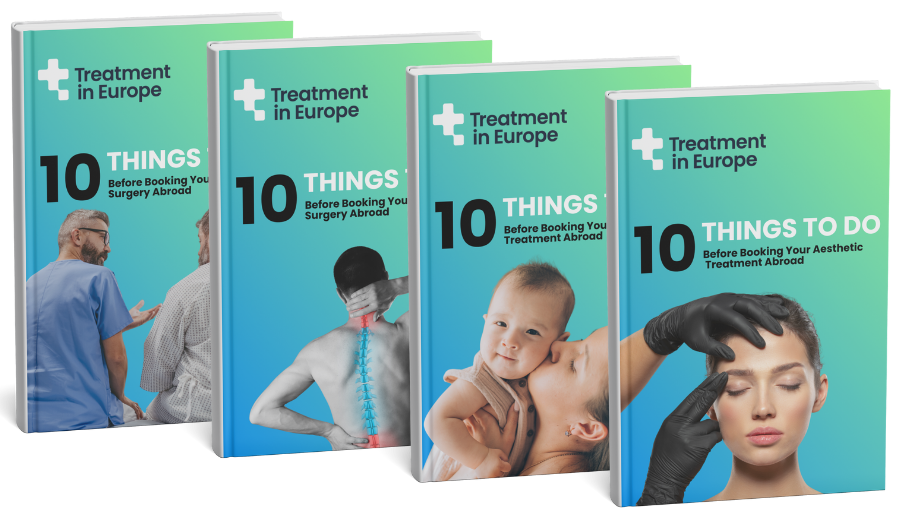
Understanding IVF Success Rates: Factors That Influence Your Chances
Introduction: The Importance of Understanding IVF Success Rates
For individuals and couples considering in vitro fertilization (IVF), understanding IVF success rates is one of the most critical aspects of planning. Clear knowledge of what shapes these rates can boost your confidence and help you make informed choices—especially when exploring options with the top IVF clinics in Eastern Europe. With real data and expert insights behind every statistic, this guide will walk you through key factors influencing IVF treatment outcomes, cost considerations, and why countries like Poland, Latvia, Estonia, and Lithuania offer some of the best value in Europe.
What Are IVF Success Rates? Key Terms and Latest In Vitro Fertilization Statistics
Defining IVF Success and Pregnancy Rates
IVF success rates measure the likelihood that one cycle of fertility treatment leads to a clinically confirmed pregnancy (and ultimately a live birth). Key terms include:
- Clinical pregnancy rate: Number of pregnancies confirmed by ultrasound per embryo transfer.
- Live birth rate: Number of cycles resulting in a live birth per started treatment cycle.
- IVF embryo transfer success: Proportion of embryo transfers that result in pregnancy.
- Frozen embryo transfer success rate: The rate of pregnancy using previously frozen embryos, which can be as high or higher than with fresh embryos.
Primary Factors Affecting IVF Success
- Female partner’s age
- Egg and sperm quality
- Clinic technology and lab expertise
- Number and quality of embryos transferred
- Underlying conditions and health status
According to recent in vitro fertilization statistics published in Europe, average live birth rates per embryo transfer range from 30–50%, depending on these and other variables.
IVF Success by Age: How Does Age Influence Outcomes?
Statistics for Women Under 35, 35–40, and Over 40
- Under 35: Success rates can be as high as 50–55% per cycle.
- 35–40: Rates drop to 35%–45%, with noticeable declines each year past 38.
- Over 40: Success rates decline sharply, averaging 10–25%.
IVF Success for Older Women
Although IVF success for older women is statistically lower, many achieve pregnancy with advanced treatments like donor eggs or blastocyst transfers. Selecting clinics with expertise in older patient care, such as Ovumia Tallinn in Estonia, can improve outcomes.
For fully personalized care and real-life IVF success stories, read more about AVA Clinic in Latvia, known for their tailored approaches for women over 40.
Other Major Factors Affecting IVF Success Rates
IVF Egg Quality & Ovarian Reserve
Your egg quality directly influences embryo development and implantation. Clinics often assess your ovarian reserve using hormone tests and ultrasound, which help guide your protocol to maximize IVF egg quality success.
Male Infertility and Sperm Quality
Nearly half of couples face male infertility as a contributing factor. Advances in lab techniques have boosted male infertility IVF success even with moderate or severe sperm abnormalities—especially in high-tech centers like Fertility Clinic INVICTA in Poland.
Embryo Transfer: Fresh vs. Frozen Embryo Transfer Success Rates
Modern cryopreservation methods have closed the gap in frozen embryo transfer success rate compared to fresh embryo transfer. Many clinics even report higher pregnancy rates with frozen embryos.
Patient Lifestyle & Health Factors
- Maintaining a healthy weight supports better IVF outcomes.
- Quitting smoking and moderating alcohol/caffeine intake can increase odds.
- Chronic illnesses like thyroid disease or diabetes should be stabilized.
Clinic Quality, Technology, and Protocols
The experience and expertise of lab embryologists, as well as the clinic’s use of advanced technologies (like time-lapse embryo monitoring or PGT-A genetic screening), play crucial roles in IVF procedure outcomes. Clinics such as IVF Riga and Northway Clinic Lithuania are recognized for high-tech environments and quality standards.
Fertility Clinic Success Rates: Choosing the Best IVF Clinics in Europe
Key Measurements: IVF Clinic Rankings and Data
Transparent reporting allows you to compare fertility clinic success rates. Top clinics in Eastern Europe consistently publish data on their IVF pregnancy rates, live birth rates, and age-specific outcomes—enabling benchmarking with Western Europe and the UK. For a full comparison, view the IVF clinic rankings and price comparisons on treatmentineurope.com.
What Makes a Top-Performing Clinic?
- Experienced fertility specialists and world-class embryology labs
- Accreditation from European health authorities
- Individualized treatment approaches based on your unique fertility profile
- Transparent outcome data and patient reviews
- Comprehensive patient support, including language assistance and travel guidance
Clinics such as Next Fertility Nordic and Klinika EGV demonstrate consistently strong IVF success data and high patient satisfaction.
IVF Abroad: Comparing Success Rates & Benefits in Eastern Europe
IVF Success Rates UK vs Europe
Looking at the latest 2025 fertility treatment success comparison figures, IVF clinics in Poland, Latvia, Estonia, and Lithuania achieve results comparable—or even superior—to many clinics in the UK and Western Europe, especially for patients under 40 or using donor eggs. Lower costs, reduced wait times, and personalized care contribute to their appeal.
The Appeal of Poland, Latvia, Estonia, and Lithuania for IVF Treatment Abroad
- Affordability: Access affordable IVF with high success rates—costs can be 40–70% less than Western clinics.
- Accessibility: Short wait times; many clinics offer fast scheduling for international patients.
- Quality Assurance: Accredited, modern clinics following EU health protocols.
- Convenient Travel: Well-connected flights and medical tourism packages.
To explore options, browse summary profiles for embrion clinics in Riga and My Clinic Riga – Infertility Treatment for patient-centric IVF care.
Pricing & Cost Breakdown: Affordable IVF with High Success Rates
- Poland: IVF package costs typically range €2,500–€4,200 per cycle.
- Latvia: IVF packages from €2,900–€4,500, including advanced screening.
- Lithuania: IVF costs €3,000–€4,000, with multiple cycle discounts.
- Estonia: Typical cycle cost is €3,200–€4,600.
- All-inclusive packages: (Accommodation, transfer, and support) from €4,000–€7,000—see all-inclusive medical tourism IVF packages for full details.
Compare IVF prices and package inclusions across Europe's best fertility clinics now.
Step-by-Step: How IVF Works in Europe’s Leading Clinics
- Consultation & Diagnostic Testing. Evaluate fertility status and discuss targets with your fertility specialist.
- Ovarian Stimulation. Hormone medications encourage egg development.
- Egg Retrieval. Outpatient procedure to collect eggs from ovaries.
- Fertilization. Sperm is introduced to eggs in the lab to create embryos.
- Embryo Development & Monitoring. Embryologists monitor embryos for quality selection.
- Embryo Transfer. One or more embryos placed into the uterus.
- Pregnancy Test. Blood test confirms if pregnancy occurred.
Learn more about the IVF process and advanced options available in top Eastern European clinics.
Country Comparison: IVF in Poland, Latvia, Estonia & Lithuania
Travel & Accessibility
- Poland: Major cities like Warsaw and Gdansk offer direct flights and easy road/rail access.
- Latvia: Riga is an international hub with daily links across Europe.
- Estonia: Tallinn is efficiently connected; clinics like Ovumia Tallinn cater to foreigners with English-speaking staff.
- Lithuania: Vilnius and Kaunas easily accessible for regional and international patients.
Typical IVF Costs
- Poland: €2,500–€4,200 per cycle.
- Latvia: €2,900–€4,500 per cycle.
- Estonia: €3,200–€4,600 per cycle.
- Lithuania: €3,000–€4,000 per cycle.
Clinic Accreditation & Quality Assurance
- All countries’ clinics comply with EU tissue directives.
- Most leading centers are ISO certified and have international patient programs.
Average Wait Times
- Most clinics offer consultations within 2–4 weeks and rapid treatment scheduling.
- Some clinics provide priority slots for international patients—see embrions Riga for details.
Improving Your IVF Chances: Practical Steps for Success
Using an IVF Success Calculator
Online tools such as an IVF success calculator help estimate your personal odds of success based on age, diagnosis, and treatment history. Many clinics offer this service as part of your first consultation.
Patient Stories and Evidence-based Tips
- Choose clinics with robust data—see real IVF success stories on patient review platforms.
- Follow medical advice to optimize your health and reproductive status prior to treatment.
- Consider donor egg, sperm, or embryo programs if recommended by your specialist.
- Ask about embryo culture and blastocyst transfer protocols for the highest IVF pregnancy success factors.
Get our free "Ultimate Pre-Treatment Abroad Checklist"
Planning treatment abroad can be overwhelming - but it doesn’t have to be. Our “Ultimate Pre-Treatment Abroad Checklist” guides you step-by-step through everything you need to do before booking your procedure abroad.
FAQ: Common Questions About IVF Success Rates
What is the average IVF success rate for one cycle?
Average IVF pregnancy rates in Europe range from 35–50% per embryo transfer, with variation by age and clinic. Your personal odds are higher if you are under 35 and using your own eggs.
Does using frozen embryos affect IVF success rates?
With modern technology, frozen embryo transfer success rate is often equal or superior to fresh transfer, depending on embryo quality.
Can male infertility factors be overcome with IVF?
Yes, specialized techniques (ICSI, surgical sperm retrieval) yield high male infertility IVF success even in challenging cases.
How do I choose the best IVF clinic for my situation?
Look for transparent outcome data, individualized care, clinic rankings, and support options. Start your research with a comparison of Europe’s leading IVF clinics and costs.
Is IVF abroad safe, and will I receive the same quality as in my home country?
Yes, leading clinics in Poland, Latvia, Estonia, and Lithuania offer high-quality care, EU regulation compliance, and internationally trained professionals. Many patients achieve IVF treatment outcomes equal to or better than domestic clinics.
Conclusion: Start Your Journey with IVF in Europe
The path to parenthood through IVF can feel uncertain, but understanding IVF success rates and the factors affecting outcomes will empower your decision. Eastern Europe offers world-class clinics, competitive costs, short wait times, and high success rates—making it an increasingly popular destination for cross-border fertility care. If you’re ready to take the next step, compare verified clinics and prices at treatmentineurope.com, or request your all-inclusive IVF quote—and take that important step toward your dream of starting or growing your family.
Looking for treatment options? We can help you find the best care abroad in 24-48h!

Get the medical Care You Need at 50–70% Less

EU-Certified Clinics
.svg)
Short waiting time
Get clinic quotes in 24-48h — free & no commitment
What's next?
- Get a quote for procedure
- Consultation with our coordinator
- Confirm the quote
- Arrange your travel


